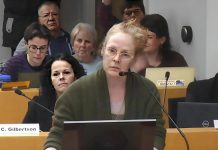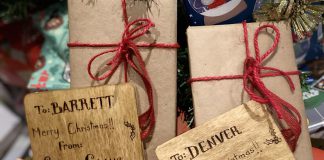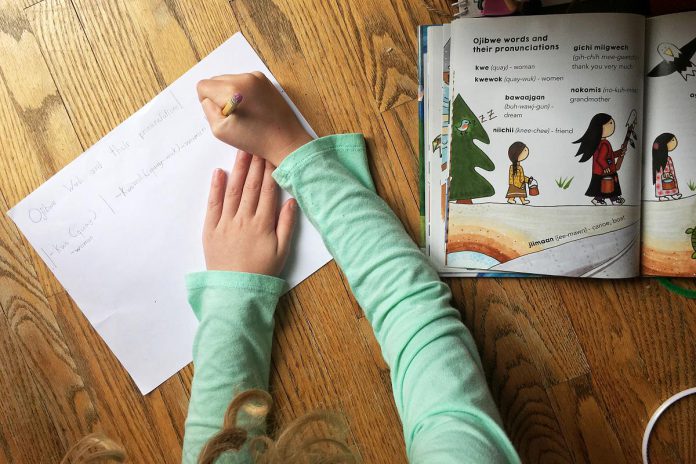
At GreenUP, we have been sharing recommendations for books, films, recorded presentations, etc. in response to Call to Action #92 from the Truth and Reconciliation Commission. Here are a few of those recommendations. We’ve tried, where possible, to select books and recordings that should be available either through the public library system or online.
You may think of this as a top 10 summer reading list, but a listening list seems more appropriate right now, especially in light of Indigenous survivors of the residential school system asking settlers to stop asking how we can help and to start listening.
While there is hard work in healing, so too is there joy. Likewise, in this list there is both joy and hard work, and we hope these lead you towards more listening and learning and sharing. We all need to open good spaces for these conversations.
At the end of this list are some books for children. If you are wondering how to talk about these books and the Indian Residential School System with your children, check out #6 on our list, this CBC news article, and the free online course ‘Indigenous Canada’, offered through the University of Alberta.
1. “21 Things You May Not Know About the Indian Act: Helping Canadians Make Reconciliation with Indigenous Peoples a Reality” by Robert Joseph

Robert Joseph is a member of the Gwawaenuk Nation, a leading cultural sensitivity trainer, and a former associate professor at Royal Roads University.
This award-winning 2018 book was based on an article Joseph wrote that ended up going viral.
In addition to Joseph’s book, we should all be reading and re-reading the Truth and Reconciliation Commission and advocating for the 94 Calls to Action.
2. “Motorcycles and Sweetgrass” by Drew Hayden Taylor
If you have not read or watched anything by Drew Hayden Taylor, then you are missing out. Taylor is a master of comedy, and this is his first novel for adults.
Born in Curve Lake First Nation, Taylor is an accomplished playwright, author, and journalist. You may have heard of his play and complementary documentary Cottagers and Indians.
With magic, humour, and a band of marauding raccoons, 2010’s Motorcycles and Sweetgrass explores the challenges that residents of the Otter Lake Anishinawbe community face when a mysterious white man rides into town on a vintage Indian Chief motorcycle.
3. “Michi Saagiig Nishnaabeg: This is Our Territory” by Gidigaa Migizi and Doug Williams
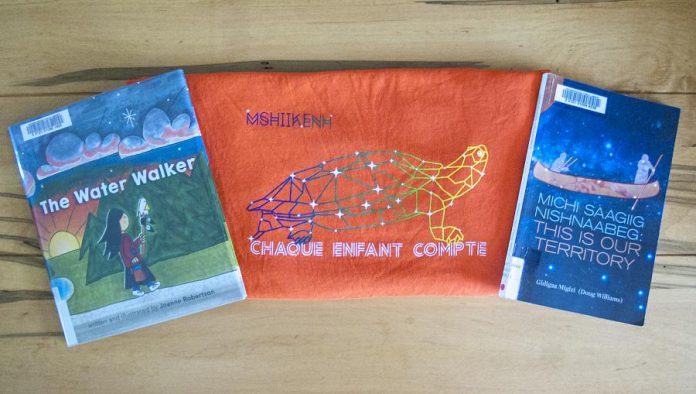
This is the oral history of the Michi Saagiig Nisnaabeg recounted by Anishinaabe Elder Gidigaa Migizi (Doug Williams), a member of the Curve Lake First Nation.
This 2018 book was edited in collaboration with Leanne Betasamosake Simpson.
If you are a resident of the Peterborough area, this book is a crucial window into the history and significance of the lands you live on.
4. REDTalks Series
REDTalks celebrates ideas and performances from Indigenous artists, changemakers, and leaders. Bookmark redskyperformance.com/index.php/redtalks/ so you can watch upcoming performances and talks.
Several REDTalks from last year are available on YouTube. In particular, a recording of the inaugural Wisdom Keepers Series from May 20, 2020, offers Indigenous perspectives and contexts on the pandemic.
VIDEO: REDTalks – Wisdom Keeper Series with Senator Murray Sinclair and Lee Maracle
In this recording, you can join Senator Murray Sinclair, author and activist Lee Maracle, and artistic director and moderator Sandra Laronde. Together, they explore how the pandemic may offer opportunities to reconnect with the ecology of Indigenous values and step towards living in balance with all living beings.
5. “Who Named That Bird? Decolonizing Birds with Joseph Pitawanakwat”
“Wilson’s Warbler, American Woodcock, Canada Goose, Cooper’s Hawk — who named these birds and what do the names mean?”
This November 5, 2020 talk hosted by the Toronto Public Library explores how the Anishinaabe people name and understand birds.
The contrasts are striking between how European settlers often named animals as though to own them and how the Anishinaabe language instead connects people to land and nature.
The talk is presented as a conversation between Joseph Pitawanakwat and Andrés Jiménez. Pitawanakwat is a holistic health and plant educator and a member of the Wikiwemikong First Nation. Jiménez is the Environmentalist in Residence at the Toronto Public Library.
You can register to watch the talk for free at crowdcast.io/e/tpldecolonizingbirds/
6. “How to discuss injustice toward Indigenous Peoples with your children, age 0 – 8” by Nicole Stamp
A short, easy-to-read blog post by Nicole Stamp that offers age-appropriate family learning at its best when we need it most.
As a director and writer, Nicole Stamp has contributed to much awesomeness for kids: Blue’s Clues, Odd Squad, and TVO Kids. Stamp is also a senior equity consultant and children’s educator. In consultation with Wab Kinew, Stamp created this helpful blog for parents in response to the recent confirmation of mass graves at residential schools.
Sharing books by Indigenous authors that support Indigenous-owned businesses matters. It is also important to share stories that include Indigenous languages and portray Indigenous people in empowering, respectful ways. Stamp took this and much more into consideration when she created this resource.
Check it out at lovevery.com/community/blog/uncategorized/how-to-discuss-injustice-toward-indigenous-peoples-with-your-children-age-0-8/.
7. “The Water Walker” by Joanne Roberston
Written and illustrated by Joanne Roberston, this is the beautifully illustrated story of Nokomis (Ojibwe Grandmother) Josephine-ba Mandamin and her love for Nibi (water).
Nokomis walks to raise awareness for the need to protect Nibi for all life.
After reading this 2017 book, you and your child(ren) may want to learn more about the local organization, Sacred Water Circle, and local Water Walk events.
Find out more at secondstorypress.ca/kids/thewaterwalker.
8. “We are Water Protectors” by Carole Lindstrom
Written by Carole Lindstrom and illustrated by Michaela Goade, this 2020 book was a New York Times bestseller and the 2021 winner of the prestigious Caldecott Medal.
It is on order at the Peterborough Public Library and is also available through the library as an e-book.
Like “The Water Walker”, this book is inspired by the Indigenous-led movements calling for the protection of water from harm and corruption.
Find out more at us.macmillan.com/books/9781250203557.
9. TRACKS Seasonal Activity Books
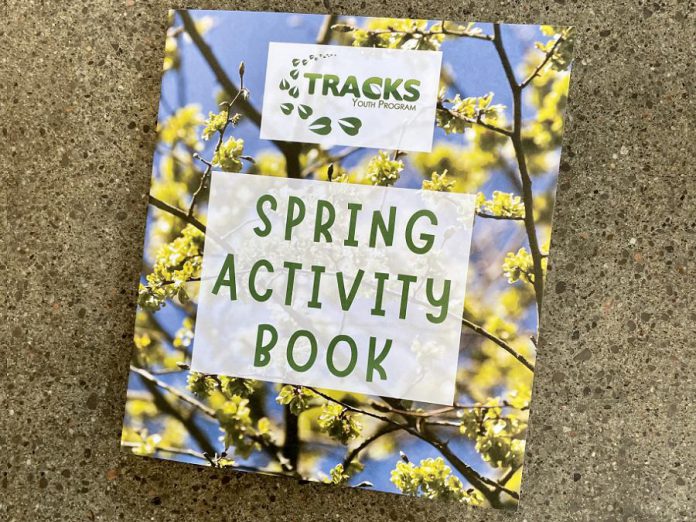
These seasonal activity books are created by the TRACKS Youth Program (Trent Aboriginal Cultural Knowledge and Science). The books offer a variety of pen-to-paper activities and invitations to learn on the land.
Activities are intended for kids between the ages of six and 12, with the assumption that younger kids may need more help from an adult.
To order the books, visit tracksprogram.ca/seasonal-activity-book-subscription.
10. “Shi-shi-etko” and “Shin-chi’s Canoe” by Nicola I. Campbell
Award-winning author Nicola I. Campbell is Nlaka’pamux, Sylix, and Métis. Campbell’s stories, with pictures by Kim LaFave, share land-based teachings of respect, endurance, healing, and reciprocity.
Shi-shi-etko (“She loves to play in the water”) is a 2005 book follows a young girl as she absorbs and appreciates the natural beauty and traditional knowledge of her community during her final four days at home before she must leave for Indian Residential School.
Shin-chi’s Canoe (2008) follows Shi-shi-etko’s brother as the two siblings arrive at Indian Residential School. When at the school, Shin-chi finds solace at the river with the tiny cedar canoe toy that his father gave him.
Find out more about Campbell’s books at strongnations.com/gs/show.php?gs=3&gsd=992.


